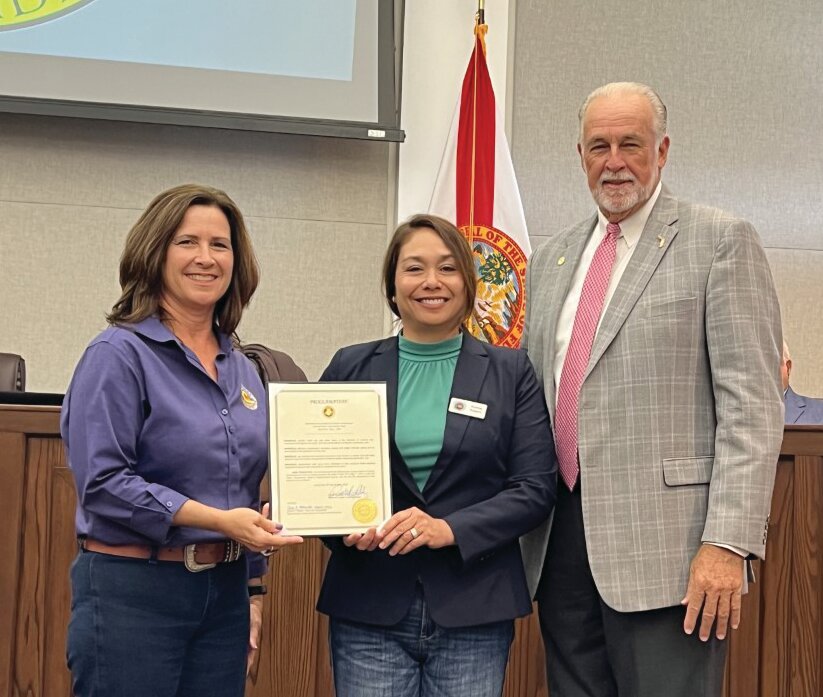OKEECHOBEE – Okeechobee County Commissioners declared April 30-May 7 as Soil & Water Conservation Stewardship Week ...
Join our family of readers for as little as $5 per month and support local, unbiased journalism.
Already have an account? Log in to continue. Otherwise, follow the link below to join.
Please log in to continue |

OKEECHOBEE – Okeechobee County Commissioners declared April 30-May 7 as Soil & Water Conservation Stewardship Week during the April 27 commission meeting.
According to the staff report, National Association of Conservation Districts Stewardship Week is one of the largest national programs to promote natural resource conservation. Celebrated annually since 1955, and it reminds us of our individual responsibilities to care for natural resources.
In 2023, NACD’s Stewardship Week will be focused on watersheds and the theme of “One Water.” A watershed is an area of land that channels rainfall and snow melt to
creeks, streams, and rivers, eventually leading to outflow points such as reservoirs, bays, and the ocean. Those bodies of water are all connected, so every drop that falls becomes part of one water.
Watersheds can be any size and usually have some high points of land like hills, mountains, or ridges. When rain, sleet, or snow falls to the ground, the precipitation runs from those higher points to the lower points. Gravity pulls the water downhill until it reaches a body of water. If the land in the watershed is steep, the water usually runs off into rivers or streams. If the land in the watershed is level, the water will slowly flow into lakes or ponds, or seep into the soil and add to groundwater. If the watershed is close to the ocean, then tidal marshes, estuaries, and wetlands will be part of the watershed. From the top of the mountain all the way to the coast, it is all one water.
“Stewardship calls upon every individual to help conserve these precious resources to ensure their prosperity for generations to come.”
“It’s not just our ag community. It’s everyone’s responsibility to remain good stewards of the land,” said Audrey Kuipers of the Soil & Water Conservation District.